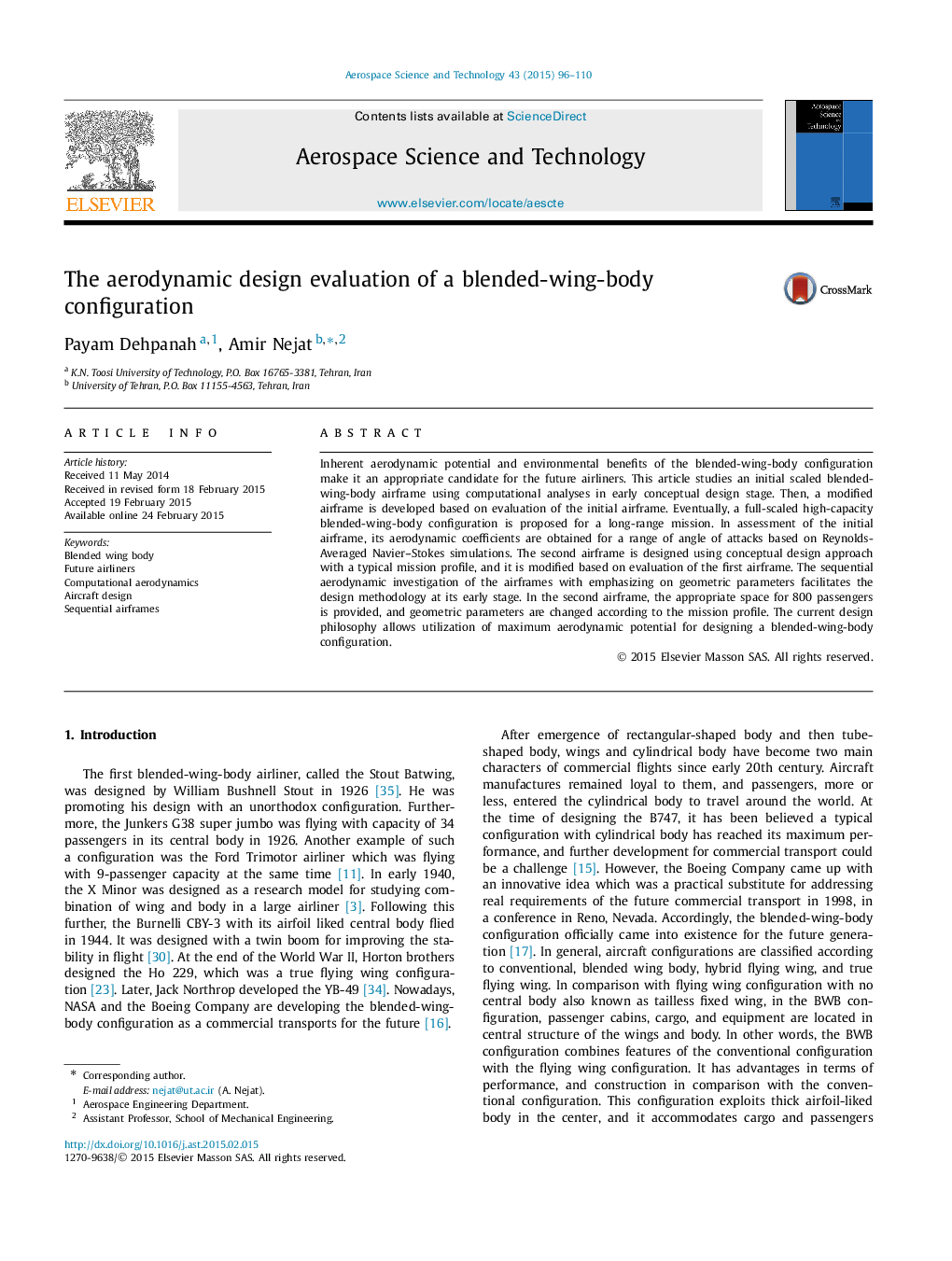| Article ID | Journal | Published Year | Pages | File Type |
|---|---|---|---|---|
| 8058940 | Aerospace Science and Technology | 2015 | 15 Pages |
Abstract
Inherent aerodynamic potential and environmental benefits of the blended-wing-body configuration make it an appropriate candidate for the future airliners. This article studies an initial scaled blended-wing-body airframe using computational analyses in early conceptual design stage. Then, a modified airframe is developed based on evaluation of the initial airframe. Eventually, a full-scaled high-capacity blended-wing-body configuration is proposed for a long-range mission. In assessment of the initial airframe, its aerodynamic coefficients are obtained for a range of angle of attacks based on Reynolds-Averaged Navier-Stokes simulations. The second airframe is designed using conceptual design approach with a typical mission profile, and it is modified based on evaluation of the first airframe. The sequential aerodynamic investigation of the airframes with emphasizing on geometric parameters facilitates the design methodology at its early stage. In the second airframe, the appropriate space for 800 passengers is provided, and geometric parameters are changed according to the mission profile. The current design philosophy allows utilization of maximum aerodynamic potential for designing a blended-wing-body configuration.
Related Topics
Physical Sciences and Engineering
Engineering
Aerospace Engineering
Authors
Payam Dehpanah, Amir Nejat,
